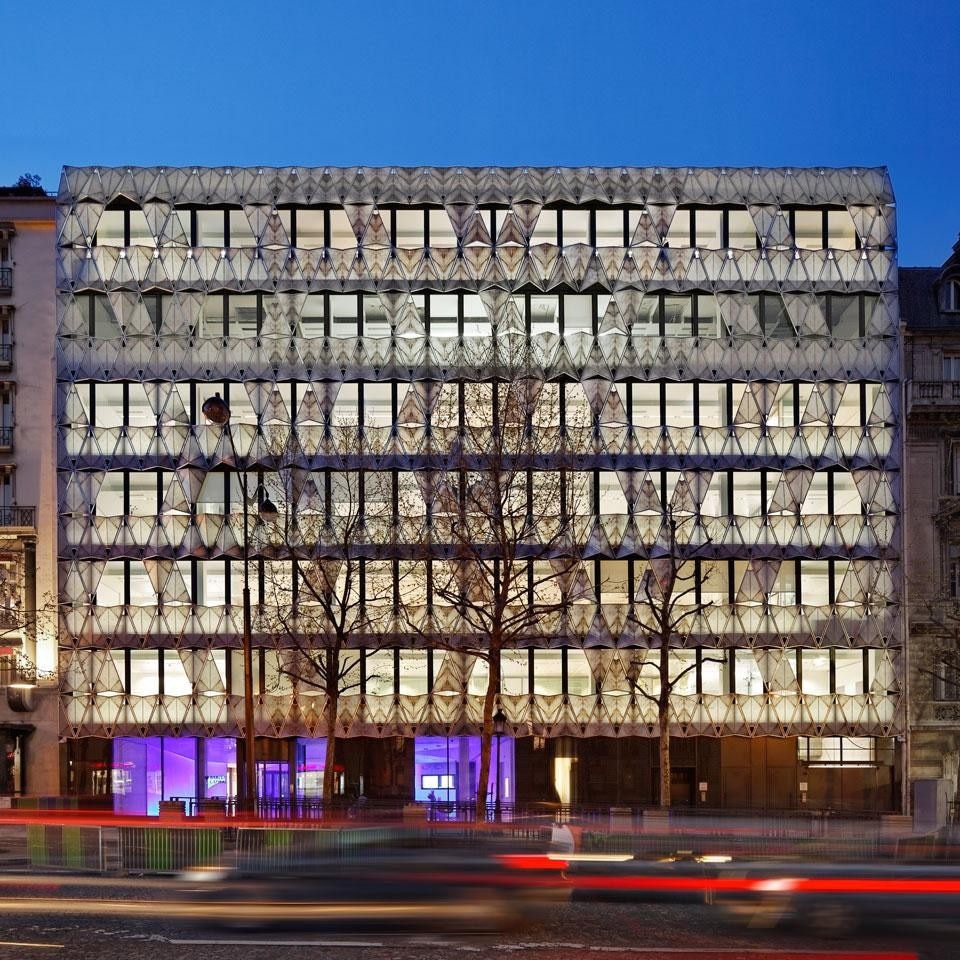The unusual location of the site led Manuelle Gautrand Architecture to design a project that would embrace and take advantage of the view and immerse into the natural light. An emblematic showcase of the building—the main façade is mostly glass, partially covered with a second skin of screen-printed marble pattern. The rendered effect is a tremendous origami and the view of this delicate folded marble can be enjoyed both from exterior and interior of the building.
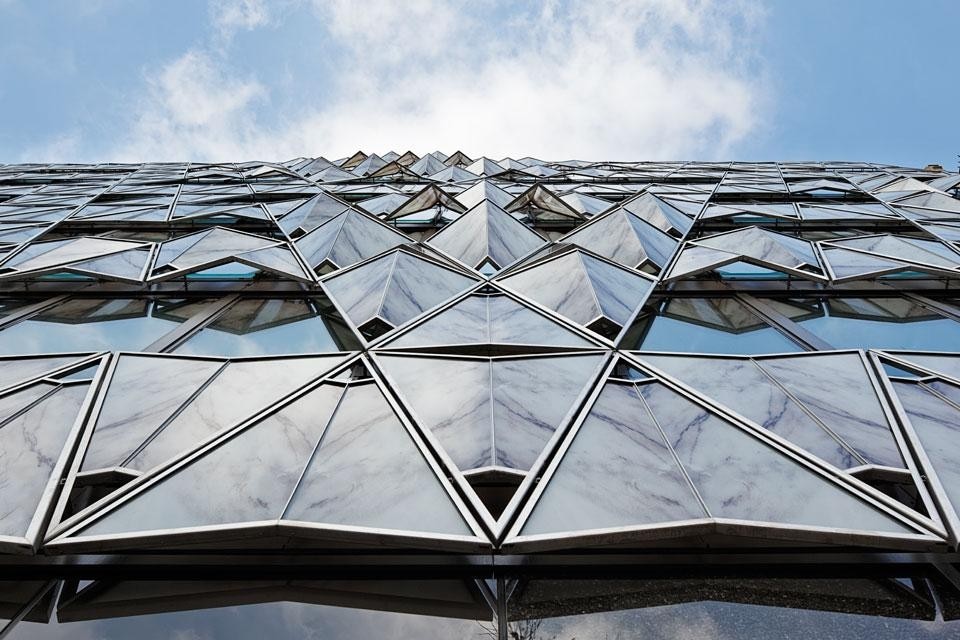
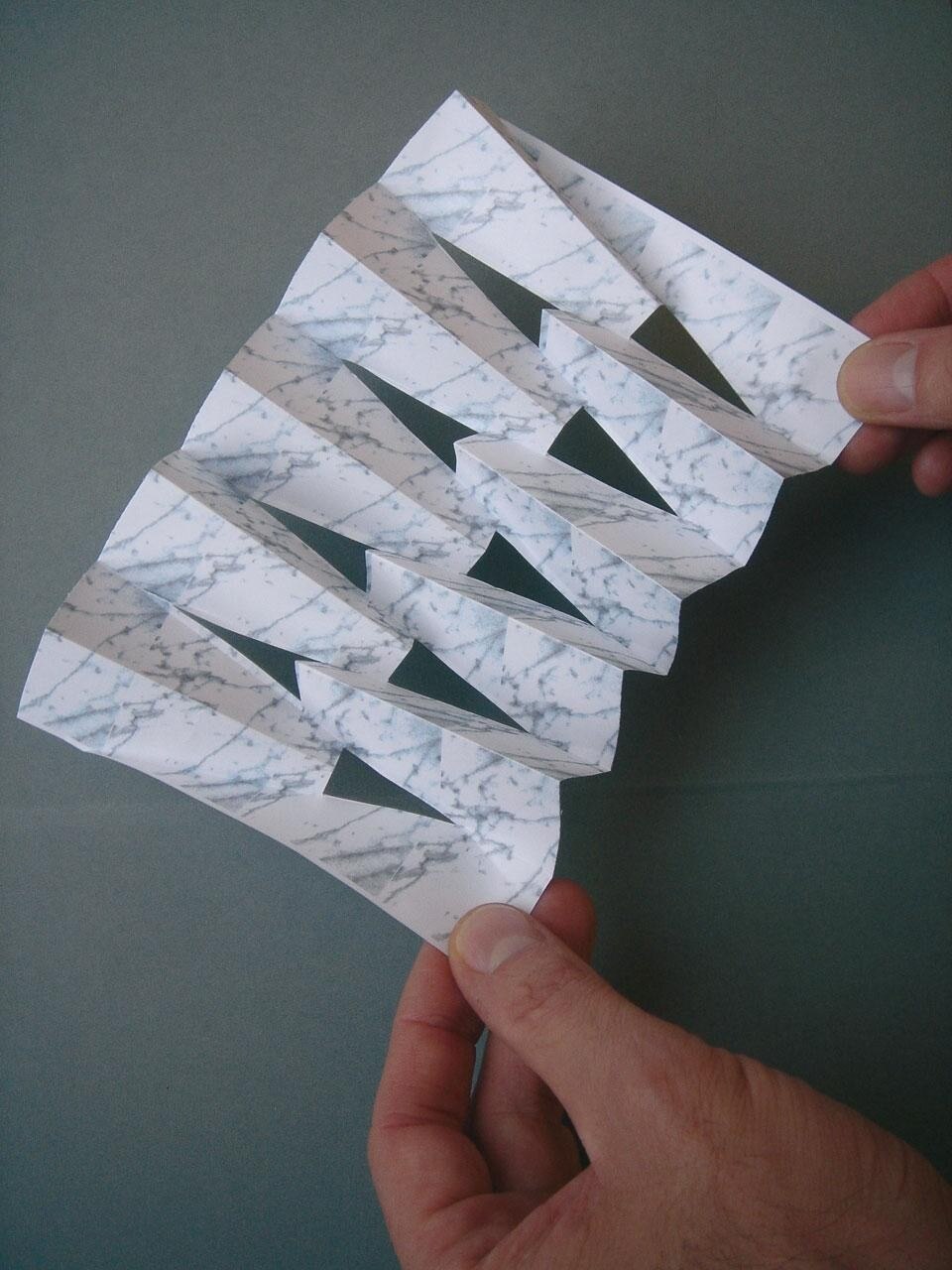
- The color and the design may be perfectly controlled, especially in comparison with neighboring buildings whose stone colors have been modified or renovated.
- The precise position of the veins of the marble was achieved through a perfectly cut framework layouts in order to create an assemblage of an "open book" folds that remind a historical tradition of marble stone-works.
The durability of the screen-printed glass is much more assured than that of the marble, which if cut into very thin blades runs the risk of 'decrystallization.'
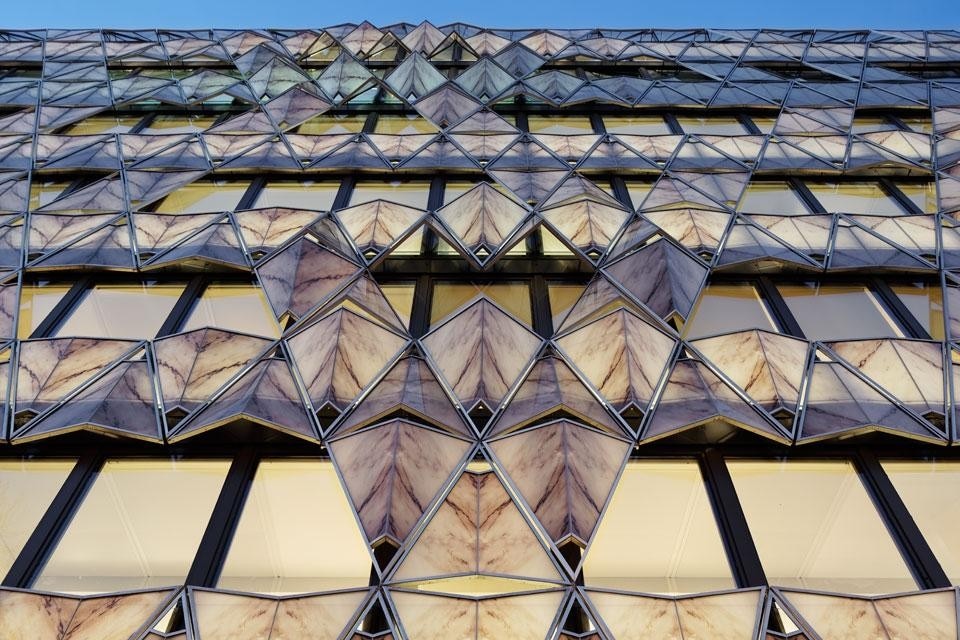
- Finally, the durability of the screen-printed glass is much more assured than that of the marble, which if cut into very thin blades runs the risk of "decrystallization".
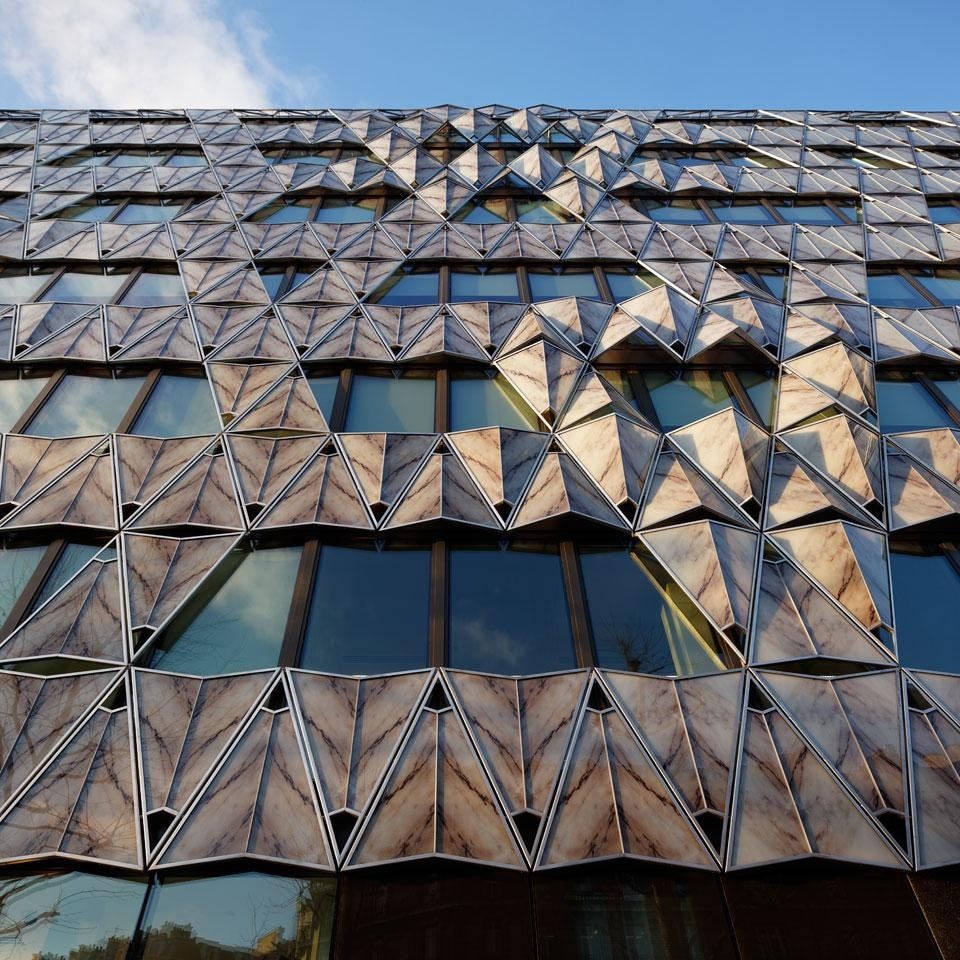
The project then develops into the depth of the site with the same objective of clarity while adding a strong presents of plants. The offices roofed with large lawns weave around the two courtyard gardens. The lobby functions as a meeting point of these two atmospheres—the urban and sophisticated of the main façade, and the more private and verdant of the other side of the building. The interior spaces were designed in a contemporary spirit, highlighting the luminous atmosphere with light-colored and soft materials.
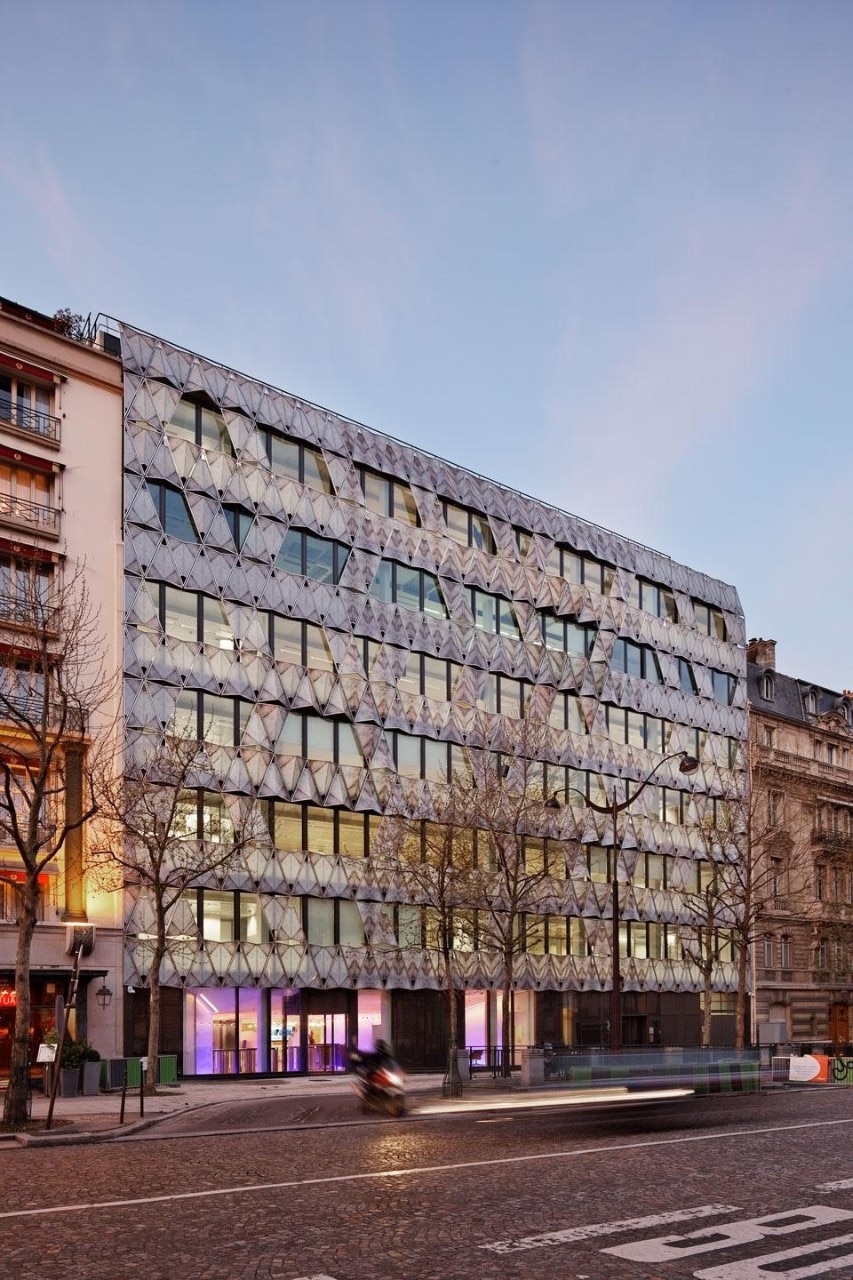
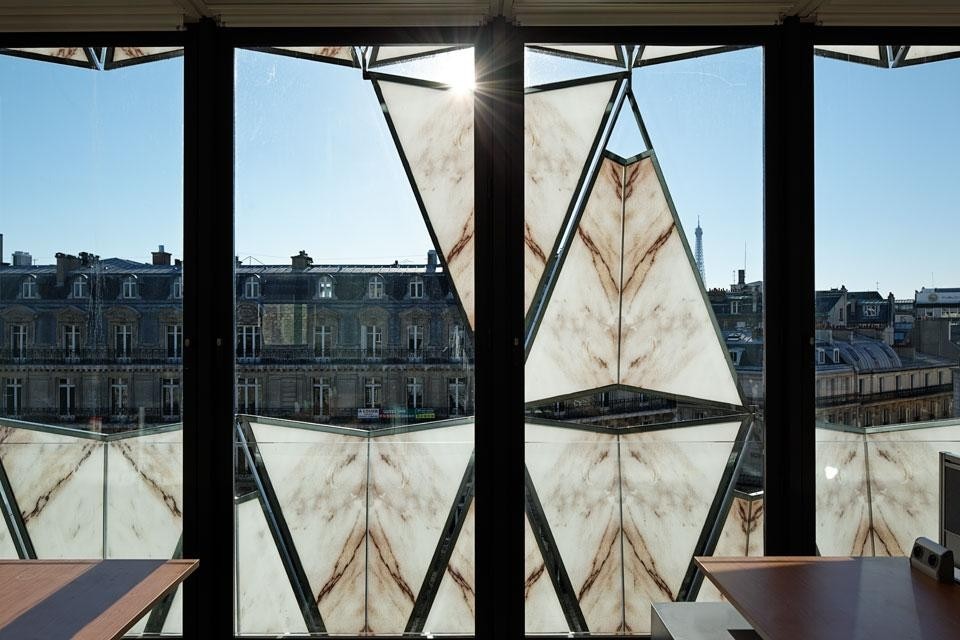
The roofs can be considered to be the 5th façade because they are visible from other roofs of the project and from the roofs of the adjacent buildings. They are all either garden roofs or landscaped with mineral materials and therefore accessible. The roof terraces are covered with stripes of wood (acacia) and offer relaxation spaces with great views on the Arc de Triomphe and Eiffel Tower.
Architects: Manuelle Gautrand Architecture. Manuelle Gautrand, principal architect; Yves Tougard, architect project manager
Client: Gecina (investor). Client's Representative: Kaufman & Broad Development
Structure: Khephren
Main structure: Colas
Curtain wall façades and exterior joinery: Schüco
Double-skin, screen-printed glass and marble façades: Simetal
Surface: 5.800 sqm
Construction:2008–2010
Completion: 2011


